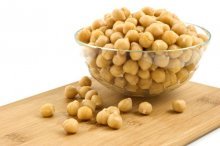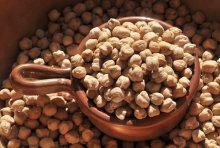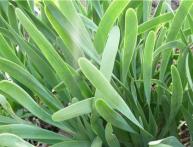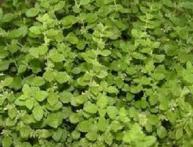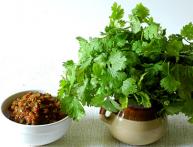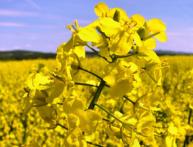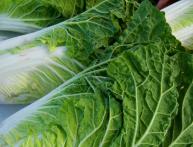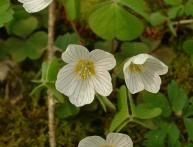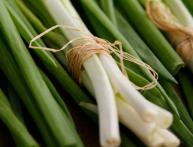Chickpeas, description and beneficial properties in medicine and cooking
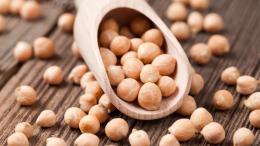
Chickpeas are a plant that has been cultivated for so long that it is quite difficult to accurately determine the date of its cultivation. The plant came to the territory of Greece and Rome back in the Bronze Age, and even then several were grown at once. varieties. In addition to being used as food, the plant was revered as a medicinal plant. For several millennia, not only the nutritional qualities of the chickpea crop, but also its beneficial properties have been used.
Content:
- Botanical description of plants from the genus Nut
- Why are chickpeas grown?
- Chickpeas in official and folk medicine
- Chickpeas in cooking
Botanical description of plants from the genus Nut
According to the classification, chickpeas are a genus of plants from the Legume family. The life form is an annual herbaceous plant, although there are also semi-shrub perennials. The roots and rhizomes are quite strong. The stems of perennial varieties are highly branched and numerous, while those of annual varieties are erect, branching most often from the middle of the shoot. Very often they have dense pubescence. The leaves of most representatives are small, the edge of the leaf blade has denticles, and can be arranged in pairs or not in pairs.
The flowers are white, light pink or blue. The flower shape, like most legumes, resembles a moth. The plant's pods are oval, swollen, and have hairy pubescence. Opens with two doors. Contains rounded parts inside seeds. There can be from 1 to 4 pieces.The surface of the seeds in most species is slightly wrinkled or warty, somewhat similar to the surface of a hazelnut. The genus includes several dozen species of chickpeas, including:
- Dzungarian
- tiny
- barbed
- Anatolian
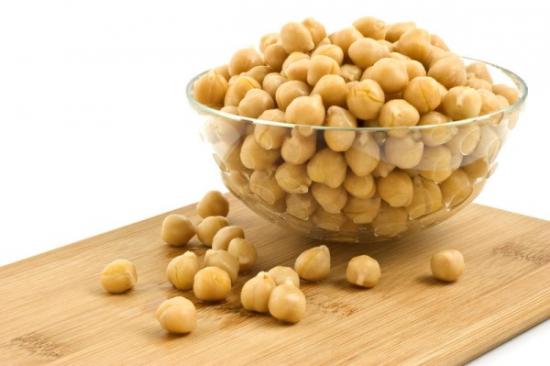
The most famous type is chickpeas or chickpeas. It is this species that is usually grown in culture and then used as food.
Why are chickpeas grown?
Chickpeas are actively grown in many countries. The leader in chickpea production is India; over the last decade, chickpea production in this country has doubled. This is due both to suitable climatic conditions, a very warm climate with a lot of sunny days and little rainfall, and to the fact that some of the population adheres to a vegetarian diet, and chickpeas are quite capable of replacing animal products.
Although the white-seeded varieties are larger, brown chickpeas are the most commonly grown chickpeas in India. Mostly small, brown-skinned desi chana grows here.
After India, the leadership in cultivation belongs to Pakistan, Australia and Turkey. Light chickpeas with large seeds - kabuli chana - are more popular here. Shelled brown chickpeas or chana dal have a very low glycemic index, which makes them indispensable in the diet of people suffering from diabetes. In terms of protein content, chickpeas are inferior to other legumes, but their proteins are absorbed by the body almost completely. Besides, benefit chickpeas is determined by the content:
- phosphorus
- potassium
- calcium
- gland
- sulfur
- cobalt
- zinc
Even a very modest amount of boiled chickpeas can provide the daily requirement for essential amino acids, folic acid and other beneficial and nutritious substances. The high fiber content helps improve intestinal function. In terms of protein content, chickpeas are not inferior to meat. Moreover, the difference between white and brown varieties in composition is insignificant.
Due to its nutrient content, chickpeas are growing in popularity around the world. Since about 2005, its plantations have appeared in the USA and Canada. Special varieties of chickpeas have been bred for cultivation in Russia and the CIS countries:
Chickpeas in official and folk medicine
From ancient times to the present day, the beneficial properties of chickpeas have been actively used in folk medicine. Currently, traditional medicine does not deny the benefits of chickpeas. First of all, ourselves beans and products made from them are recommended by doctors for therapeutic nutrition for diabetes and gluten intolerance. Chickpea dishes also help avoid iron deficiency, including for expectant mothers. In folk medicine, Turkish peas are used:
- for eye diseases
- to cleanse the body
- when coughing
It is believed that regular consumption of chickpeas is a preventive measure against eye cataracts. For prevention, it is enough to consume soaked chickpea seeds. To do this, pour half a glass of chickpeas with a glass of water in the evening and keep warm until the morning. During this time, the chickpeas will become soft and will have the maximum positive effect on the body.
To treat bronchitis, you need to take a glass of chopped chickpeas and boil it in water. Take two liters of water and cook the stew for half an hour.After that, put butter in it, season with radish and celery juice. Take small portions at regular intervals throughout the day.
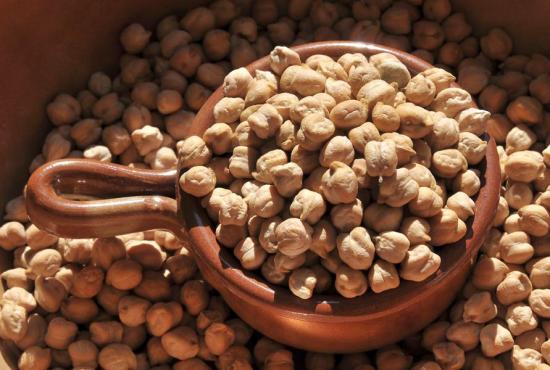
It's important to know that treatment chickpeas have contraindications. First of all, this concerns old age and individual intolerance. In addition, it is not recommended to consume chickpeas for people with diseases of the bladder, kidneys, or gall bladder during an exacerbation. Healthy people can and should include chickpea dishes in their diet.
Chickpeas in cooking
You can use chickpeas in cooking in the same way as regular peas; you can cook soups and porridge from them. You can surprise your loved ones with a salad using sprouted chickpeas. To do this, you need to germinate the chickpeas by soaking them in water for the first night. On the second day, the beans need to be washed and placed in a colander lined with a cotton or linen napkin soaked in water.
Keep for another 12 - 14 hours. Such chickpeas can already be considered sprouted; they can then be kept in the refrigerator, washing them daily. In the first days, add fresh to salads. On the 5th - 7th day, when the chickpeas have already sprouted, you can make soup from it. To prepare a vegetable salad from raw vegetables and sprouted chickpeas you need to take:
- tomato
- lettuce leaf
- clove of garlic
- a couple of tablespoons of sprouted chickpeas
- salt
Cut the tomato, tear the lettuce leaf with your hands, crush garlic, put chickpeas. Add salt to taste and season with oil and lemon juice. This dish is ideal for people who adhere to both a regular diet and a vegetarian and raw food diet. When preparing baked goods on fasting days, eggs can be replaced with chickpea decoction.
When making any dishes from chickpeas, it is important to remember that they need to be soaked for several hours; this will not only reduce the cooking time, but also reduce the unpleasant phenomena associated with excessive gas formation. In addition, you should not drink raw water immediately after chickpea dishes.
Video on how to cook chickpeas:

